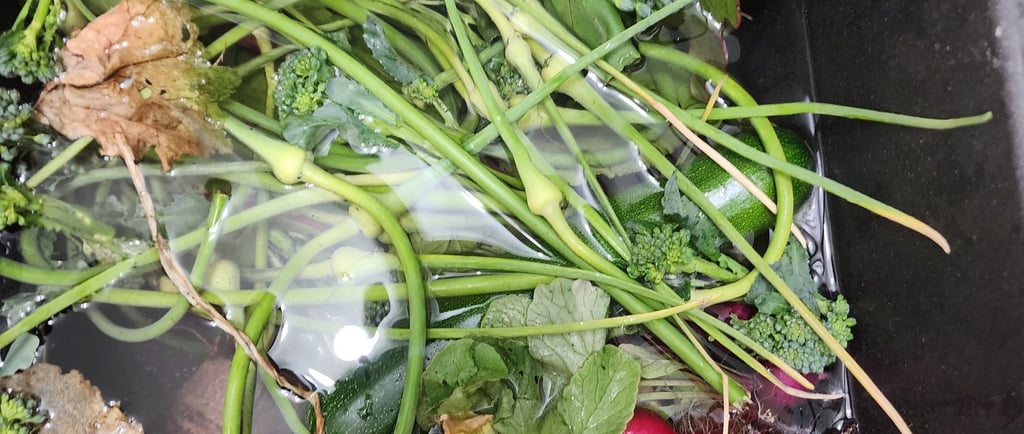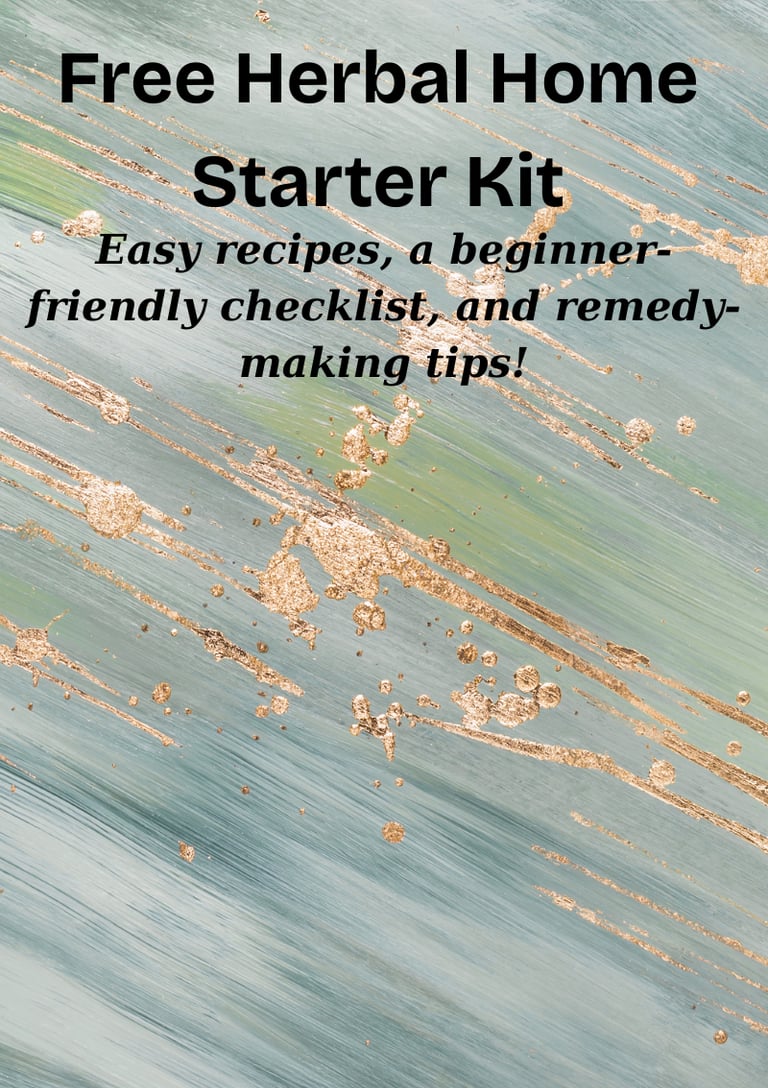7 Smart Ways to Use Garden Scraps for Herbal Remedies and DIY Cleaners
Got leftover herbs, citrus peels, or tomato skins? Learn how to turn garden scraps into vinegar sprays, bath teas, broths, and more with this cozy guide.
HOMESTEAD KITCHEN & PANTRY STAPLESLOW-TOX HOME & CLEANINGHERBAL REMEDIES & TEAS
CJ
8/17/20254 min read


Don’t Toss That! 7 Smart Ways to Use Garden Scraps in Your Apothecary, Kitchen & Cleaning
August is that deliciously chaotic moment when the garden goes a little wild. Maybe your tomatoes are coming in faster than you can eat them. Maybe your basil bolted. Maybe you’re standing in your kitchen with herb stems, squash seeds, citrus peels, and half a dozen "what now?" questions.
Before you toss those garden scraps into the compost, take a breath—and a second look.
These bits and pieces might not look like much, but they hold hidden power. In your apothecary, in your cleaning caddy, even in your dinner routine.
Here are 7 of my favorite zero-waste, witchy homemaker ways to stretch the goodness of your harvest and stock your home with purpose (and a little magic).
🖨️ Grab the Garden Scraps to Apothecary Cheatsheet PDF here
Made for You If...
Your garden or CSA box is overwhelming your kitchen
You hate wasting anything that could be useful
You’re into homemade, low-tox living with herbal roots
You want simple ways to turn scraps into salves, teas, tonics, or cleaners
What You’ll Come Away With:
7 creative, practical ways to use garden scraps
Tips for drying, infusing, or storing them safely
Recipes and ideas you can use immediately
Bonus: A printable Garden Scraps to Apothecary Cheatsheet
Affiliate product suggestions to help you get started
1. Citrus Peels → Herbal Vinegar Cleaner or Air Freshener
Citrus peels (lemon, orange, grapefruit) are gold for natural cleaning. Save the peels, toss them in a mason jar, and cover with distilled white vinegar. Let it steep for 2–4 weeks, strain, and dilute 1:1 with water for a fresh-smelling, effective all-purpose spray.
Bonus: Add rosemary or lavender stems for extra herbal power.
Use wide-mouth mason jars like these for easy filling and straining
2. Herb Stems & Wilted Bundles → Infused Oils or Bath Tea
Got leftover basil, mint, or chamomile stems? Dry them and steep in olive oil or sunflower oil for 2–4 weeks in a sunny window. These oils are perfect for salves, balms, or massage.
You can also bundle them into muslin bags with a handful of oats for a skin-soothing bath tea.
🧺 Grab a pack of reusable muslin bags here
I often use the ends of calendula, lavender, and lemon balm this way—whatever didn’t get pretty enough for the jar but still has plenty of goodness to give.
3. Overgrown Lavender & Rosemary → Bug Repellent or Carpet Sprinkle
When these herbs get woody or unruly, don’t compost them just yet. Dry the branches, strip the leaves, and save them for:
Simmer pots (with citrus for a fresh-smelling home)
DIY insect repellent spray (steep in witch hazel + add essential oils)
Herbal carpet sprinkle (mix with baking soda and a few drops of oil, shake over rugs, let sit, and vacuum)
📥 Download your FREE: Printable Simmer Pot Recipes
4. Tomato Skins & Veggie Scraps → Homemade Broth Base
When canning or cooking tomatoes, save the skins and soft bits in a freezer bag along with onion ends, carrot tops, and garlic skins. Once the bag is full, simmer for 1–2 hours for a rich vegetable broth.
I do this year-round, but tomato season makes it especially flavorful.
🧊 These reusable freezer-safe silicone bags are perfect for veggie scrap storage
5. Onion Skins → Natural Dye or Broth Booster
Yellow onion skins make a warm, golden dye for fabric, wool yarn, or even Easter eggs. They also deepen the color and flavor of broths.
Just be sure to rinse well and store skins dry to avoid mold.
6. Squash & Melon Seeds → Roast or Reseed
Don’t toss those seeds! Clean and dry them to roast with olive oil, salt, and herbs for a nourishing snack. Or save the best ones for next year’s planting.
My daughter loves helping rinse and spread them out to dry. It’s a beautiful full-circle moment from harvest to snack or seed packet.
🍴 These silicone baking mats are great for seed roasting with no sticking
7. Spent Chamomile or Tea Herbs → Facial Steam or Compost Boost
If you’ve brewed a big batch of tea or have leftover herbs from an infusion, save them for a second life. Reheat gently for a facial steam or sprinkle into compost to nourish your garden all over again.
Some nights, I reuse sleepytime tea herbs for a calming bedtime steam. It’s like getting two rituals for the price of one.
Final Thought:
This is the beauty of the garden life: nothing has to go to waste. With just a little curiosity and creativity, you can turn scraps into salves, trash into tonics, and leftovers into lasting care.
These practices don’t just save money or reduce waste—they deepen our connection with the land, the season, and ourselves.
And isn’t that what kitchen witchery is all about?
🖨️ Don’t forget to grab your Garden Scraps to Apothecary Cheatsheet for quick-reference tips.






Questions? Email me at hello@thehearthwitchsnook.com
Explore natural remedies and hearth-centered living.
© 2025. All rights reserved.
Disclaimer: The content on this website is for educational and informational purposes only. It is not intended to diagnose, treat, cure or prevent any disease or health condition. Always consult with a qualified healthcare provider before making changes to your health or wellness routines-especially when using herbs, essential oils, or supplements for children, pets, or if you are pregnant, nursing or have a medical condition. The Hearth Witch's Nook is not responsible for individual outcomes.




